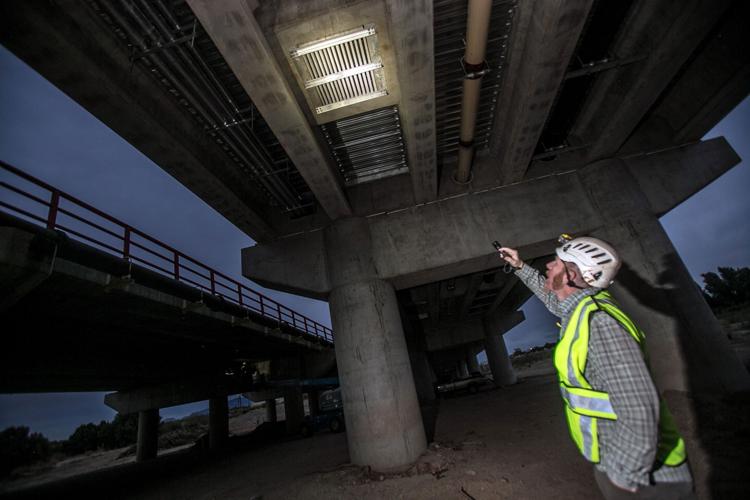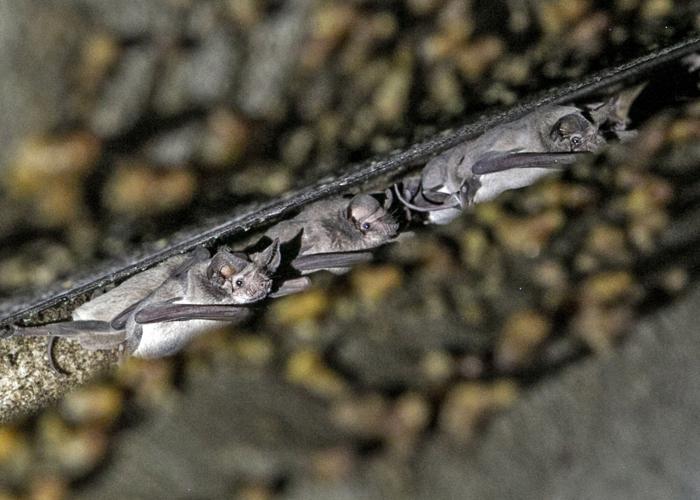Excavators tearing down old interstate bridges, new ones going up and hundreds of gallons of new deck concrete being poured are some of the most dramatic — and visible — parts of the massive $148 million Ina Road-Interstate 10 interchange project.
But there’s also some interesting stuff going on behind — or perhaps more accurately, under — the scenes.
Beneath the old Ina bridge over the Santa Cruz River, which will be replaced by a pair of two-lane bridges, you can hear the high-pitched squeaks of the migratory Mexican free-tailed bat before getting a whiff of their roosts’ distinctive smell.
Though it’s the low season , Arizona Game and Fish bat ecologist Joel Diamond told the Road Runner that there’s an estimated 1,000 of the creatures packed tightly into the crevices. At high season, as many as 25,000 call the soon-to-be-destroyed structure home, while a nearby tunnel also hosts roughly 10,000 cave myotis bats.
So, where are the bats going to go when the place they’ve called a seasonal home for years comes tumbling down?
If things go according to plan, they’ll be moving right next door, into bat boxes installed under the new bridges. Game and Fish crews are sealing up the cracks every night after the bats head out to forage for the evening.
The low season was selected for that work to minimize what is no doubt a frustrating situation for the bats: Returning home after a long night’s hunt to find that, effectively, the locks have been changed on their homes.
However, the new homes should be to their liking. That’s because Diamond and his colleagues have been logging microclimate data from inside the current roosts in order to better mimic those conditions in the boxes under the new bridges.
The effort was further aided by what Diamond described as significant collaboration in the design phase between the bridge contractor — Psomas — and his office.
“Previous efforts have generally been the engineer comes in, designs the bridge, finishes the bridge and the biologist comes in as an afterthought,” he said. “With this bridge and ... the Houghton bridge, we came in on the front end.
“We’ve re-created the habitat as closely thermicly as we possibly can, given engineering constraints, and we’ll see what happens next year,” he added.
What the bats are looking for are the insulating properties of concrete, which can keep them cooler for longer in the summer and warmer for longer in the winter.
The Houghton boxes are already occupied, according to Diamond.
The seven on the Ina bridge will be monitored monthly over the next couple of years.
Kevin Thornton, Psomas’ senior project manager for the Ina interchange, said he’s “glad we were able to keep (the bats) there. I’m excited to see how it all turns out when they move over.
“There’s a lot of people who go to check out the bats,” he added.
Diamond pointed out that they also serve important ecological functions and keep the bug situation under control during the summer. Each of the bats can eat more than twice its body weight in bugs every evening, he said.
All the phases of the project, which include some bat boxes at the Cortaro Road bridge, were expected to cost about $80,000, according to a 2015 project document.






